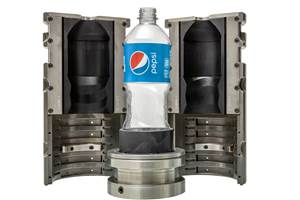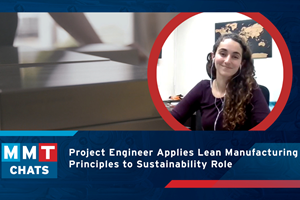A vision for carbon fiber in the automotive market
Dr. Kalyan Sehanobish shares a vision for carbon fiber in the automotive market.
Increased volatility in oil prices and a growing recognition of the human contribution to global warming and environmental pollution have resulted in an increased focus on fuel-efficient solutions for ground transportation. One result has been a more serious look at lightweighting options. Large-vehicle users, such as tractor/trailer truck operators, are already seeing the benefit of polymer composites for lightweighting, and increasingly welcome such solutions. The need for weight reduction, however, is less acute in relatively lighter-weight passenger cars. Consequently, the introduction and anticipated growth of polymer composites in the low-cost mass-production car segment will be slow. That said, in recent years, automakers have started to consider composite solutions in mid-priced automobiles where, formerly, composites were justified only in very high-end cars, as market drivers such as crashworthiness take precedence over weight savings.
If composites and their supporting technologies are to establish a firm position in the general automotive market, a number of other market drivers must be taken into account. Among them are the need for cycle time and cost reduction, and higher performing reinforcements. Further, easy repair technologies, engineering knowledge for part design and recycling technologies must become as accessible for composites as they are for metals.
The composites industry is markedly lagging the metals industry in terms of fast fabrication technology, e.g., there is no composite processing alternative, to date, to high-speed metal stamping. A consortium of industries needs to come together and attack the problem from all angles, which include improvements in dispensing technologies, curing chemistries and the energy sources that drive cure. The most talked-about effort within the automotive composites sector is that of a Japanese consortium lead by Nissan, which has reduced cycle time from 160 to 10 minutes for resin transfer molding (RTM) simple flat panels with carbon fiber/epoxy. The fact that this is newsworthy clearly indicates that the challenge is formidable: Composites must increase manufacturing speed by almost an order of magnitude to become competitive.
In the realm of reinforcements, composites will require carbon fiber if they are to replace metals in high-performance applications. Carbon fiber performance and cost are important parts of the equation when considering composites for an automotive application. Aerospace-grade carbon fibers of 600 to 1,000 ksi tensile strength and 40 msi to 60 msi modulus are in the range of $15/lb to $50/lb (USD). While standard-grade carbon fibers of 550 to 650 ksi tensile strength and 32 to 37 msi modulus are available at $7 to $14/lb, the need is great for higher performance at lower cost.
Current carbon fiber technology is hostage to the excessive cost of either the precursor or the conversion technology. Some of this is anticipated to improve if the carbon fiber capacity increases. However, it is certain that no one will take on a project to deliver low-cost carbon fiber without a vision for serious growth in the composites market or a cheaper fiber manufacturing strategy. Thus, growth in the use of carbon fiber composites needs to be celebrated and marketed, no matter how insignificant the applications might seem.
Easy repair technology and bonding solutions are just starting to be introduced for structural composites. One problem with permanent bonding technology is disassembly, which is not a concern for metals. Using conventional metal fastening technology for composites usually leads to disasters, due to crack initiation and propagation from the high stress concentration regions. But clever assembly designs that circumvent such situations are few and far between.
Engineering knowledge for designing parts with composites, although growing, is still limited. While universities are teaching courses on this topic, the emphasis is still on metals. When students face real-world situations, they soon realize that there would have to be a huge change in how cars are put together before they could take full advantage of composites. One-to-one replacement of a metal part is often the best way to prove the deficiency of a composite solution. Conversely, the biggest advantage is realized only by combining various functionalities in one part.
In my opinion, multifunctional carbon composites could become commonplace in mainstream automobiles by 2030 if several factors fall into place: the price of carbon fiber comes down; designers become more comfortable designing cars with monocoque and/or highly integrated, multifunctional structures; and fabricators reach a part cycle time on the order two to four minutes. Is it possible? Perhaps. But it will be a long process that will require several breakthroughs, including a willingness on the part of automotive OEMs to invest in the technology.
Related Content
Innovative Mold Building Enhances Packaging Material Efficiency, Elevates Recyclable Design
A manufacturing-focused design and optimized tooling enhance material efficiency in packaging for a new medical instrument.
Read MoreHow Hybrid Tooling Accelerates Product Development, Sustainability for PepsiCo
The consumer products giant used to wait weeks and spend thousands on each iteration of a prototype blow mold. Now, new blow molds are available in days and cost just a few hundred dollars.
Read MoreThermal Management, Modular Mold Systems, IoT Connectivity Demonstrated at K Show
Three new platforms displayed by DME target reduced energy consumption, costs through boosted productivity and are more sustainable for part and mold designers, molder and toolmakers.
Read MoreMMT Chats: Project Engineer Applies Lean Manufacturing Principles to Growing Sustainability Role
MoldMaking Technology Editorial Director Christina Fuges catches up with MMT’s 30-Under-30 Honoree Katherine Pistorius, who has added Regional Sustainability Coordinator alongside her Project Engineer duties, which demonstrates the many paths one can take in a manufacturing career. Here she shares how this opportunity unfolded for her and what the job entails today and in the future. This episode is brought to you by ISCAR with New Ideas for Machining Intelligently.
Read MoreRead Next
Low-cost carbon fiber: Real or just wishful thinking?
In a wide variety of applications, from easy-to-install bridges to ultra-lightweight, fuel-efficient vehicles, there has been great excitement in recent years about the potential for using carbon fiber-reinforced composites.
Read MoreReasons to Use Fiber Lasers for Mold Cleaning
Fiber lasers offer a simplicity, speed, control and portability, minimizing mold cleaning risks.
Read More






_300x250 3.png;maxWidth=300;quality=90)






.jpg;maxWidth=300;quality=90)






